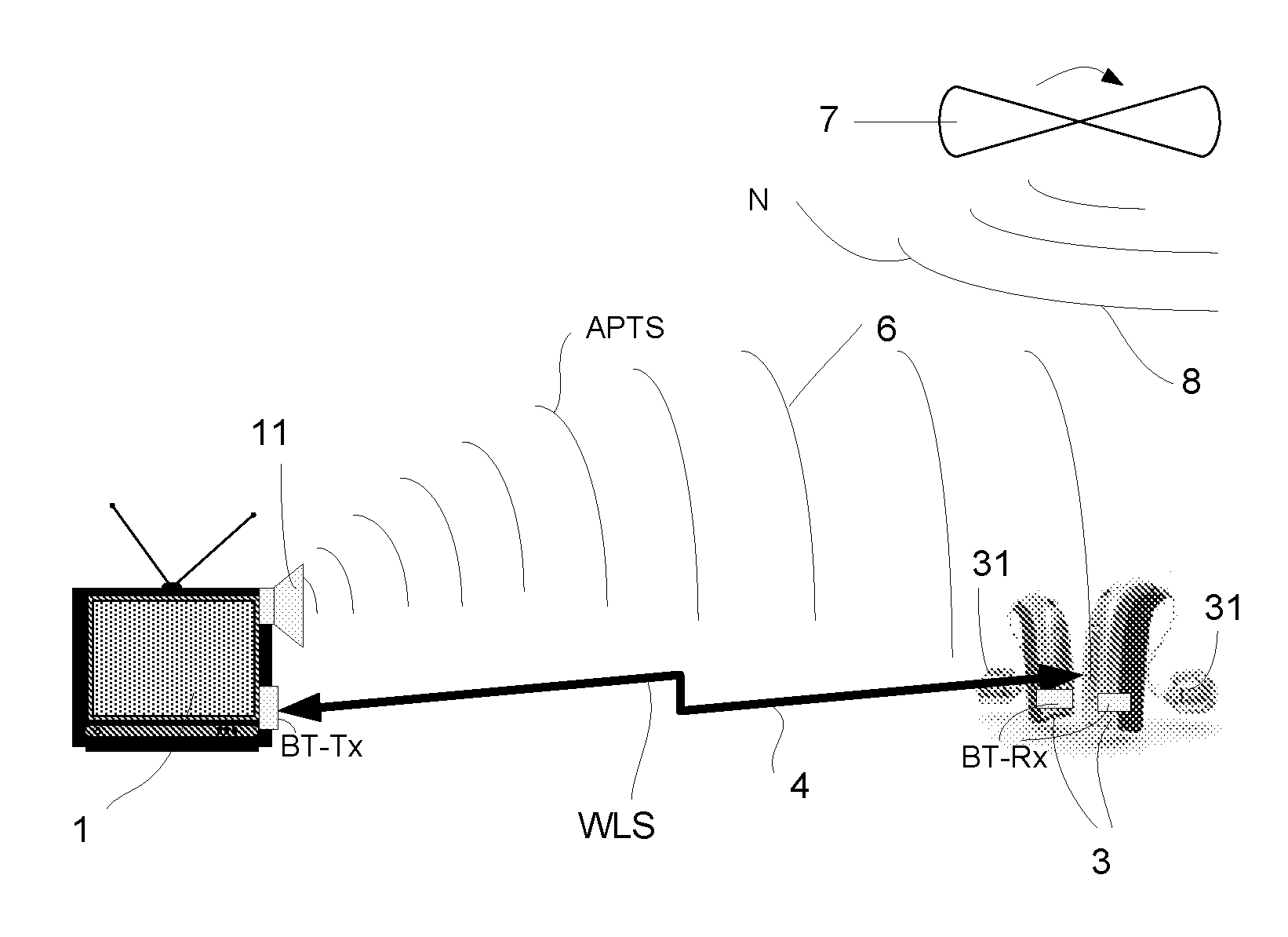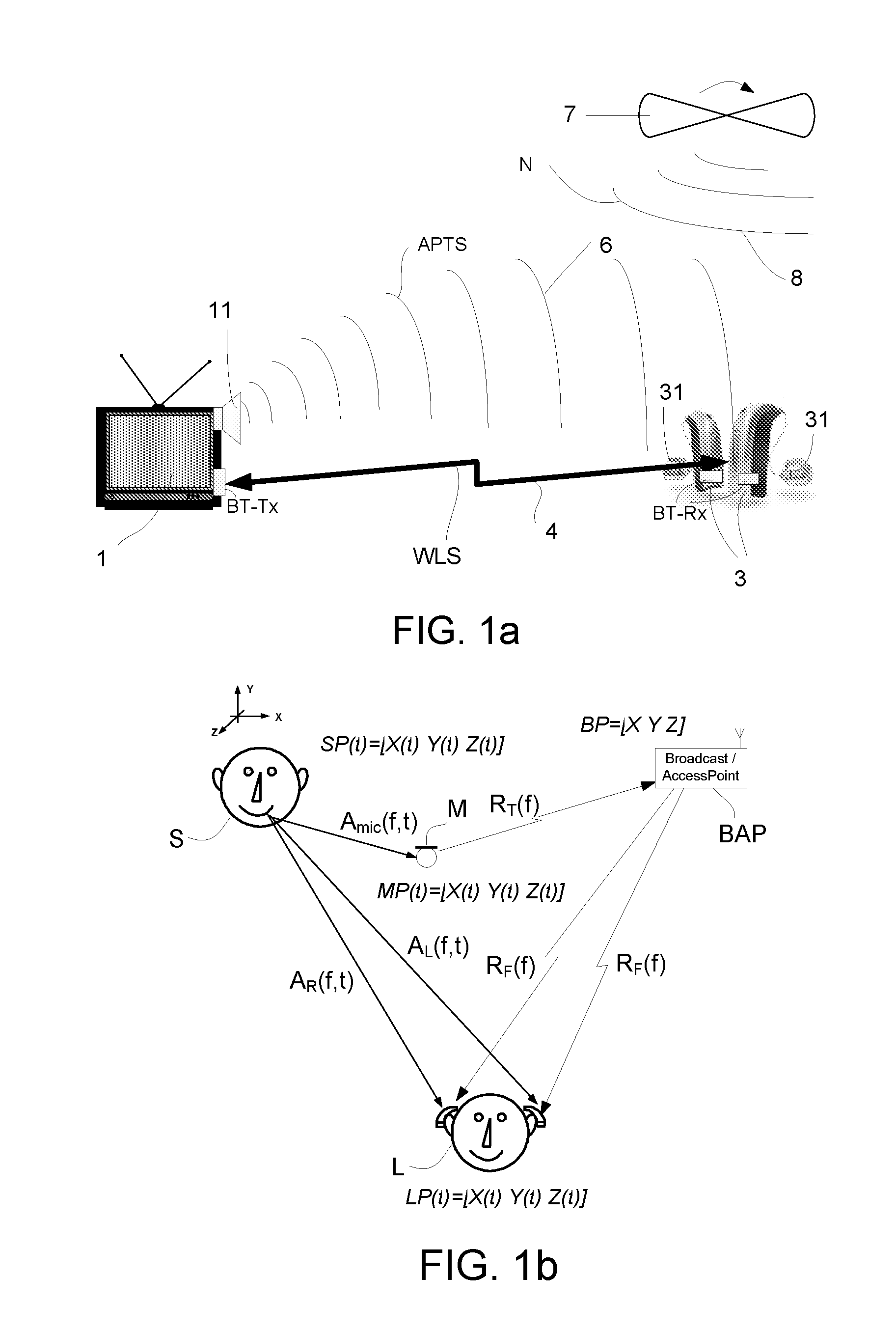Signal enhancement using wireless streaming
a wireless streaming and signal technology, applied in the field of signal enhancement using wireless streaming, can solve the problems of reducing speech intelligibility, unpleasant situation, and misalignment in time between the streamed audio signal and and achieve the effect of enhancing the target signal and enhancing the acoustic audio signal
- Summary
- Abstract
- Description
- Claims
- Application Information
AI Technical Summary
Benefits of technology
Problems solved by technology
Method used
Image
Examples
Embodiment Construction
[0094]FIG. 1 shows embodiments of an audio enhancement system according to the invention comprising an audio source, a transmitter and one or more listening devices comprising an audio enhancement device according to the invention.
[0095]The audio enhancement system of FIG. 1a comprises a TV-set and a pair of listening devices, here a pair of hearing instruments of a binaural fitting. The TV-set 1 is provided with a loudspeaker for acoustically emitting a sound signal (APTS) 6 (a target signal, which a user wishes to receive) corresponding to the TV-images AND with a transmitter for transmitting the same sound (termed target audio signal) via a wireless link 4 in the form of signal WLS. In addition to the target signal 6, a noise signal (N) 8 (here produced by a fan 7, but representing all background noise (including other sound sources than the target sound) in the environment of the user) is mixed with the acoustically propagated target signal. Both signals are received by the pair...
PUM
 Login to View More
Login to View More Abstract
Description
Claims
Application Information
 Login to View More
Login to View More - R&D
- Intellectual Property
- Life Sciences
- Materials
- Tech Scout
- Unparalleled Data Quality
- Higher Quality Content
- 60% Fewer Hallucinations
Browse by: Latest US Patents, China's latest patents, Technical Efficacy Thesaurus, Application Domain, Technology Topic, Popular Technical Reports.
© 2025 PatSnap. All rights reserved.Legal|Privacy policy|Modern Slavery Act Transparency Statement|Sitemap|About US| Contact US: help@patsnap.com



